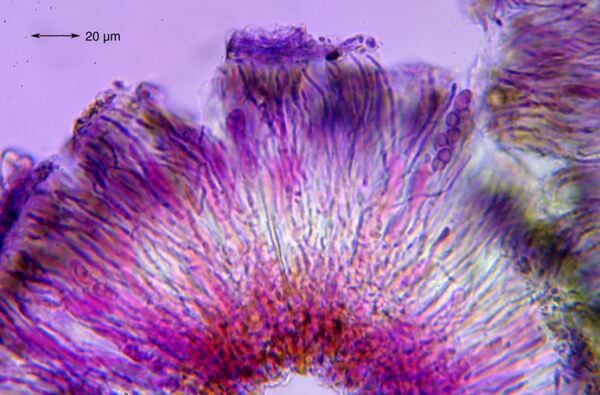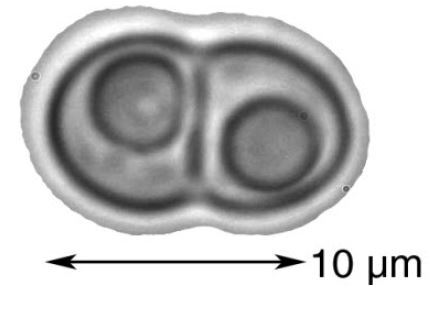Placynthium tantaleum (Hepp) Hue
Bull. Soc. Linn. Normandie, sér. 5, 9: 153, 1906. Basionym: Biatora corallinoides var. tantalea Hepp - Flecht. Eur.: nr. 276, 1857.
Synonyms: Placynthium diblastum Gyeln.; Placynthium nigrum var. tantaleum (Hepp) Arnold; Racoblenna tantalea (Hepp) Trevis.
Distribution: N - Piem (TSB 33335).
Description: Thallus crustose, episubstratic, dark olive-brown, dull, granulose to rimose-areolate, forming 2-5 cm wide patches, often delimited by a pale or dark blue to whitish prothallus. Areoles 0.5-1.5 mm thick, 1-1.5(-2) mm wide, usually flat, minutely papillose-lobulate, the papillae 0.1-0.2 mm thick. Upper cortex indistinct or poorly developed and paraplectenchymatous; medulla lacking or very thin; lower cortex of 1-3 rows of more or less isodiametrical, round to angular cells. Apothecia lecideine, immersed to subsessile, 0.3-0.7(-1) mm across, with a concave to slightly convex, smooth, blackish disc and an entire, at first prominent, then often excluded proper margin. Proper exciple dark bluish green, 50-70 µm thick; epithecium bright bluish green; hymenium colourless, 100-110 µm high, amyloid; paraphyses distinctly septate, sparingly branched; hypothecium colourless. Asci 8-spored, apically thickened, with an amyloid cap. Ascospores 1-celled to 1-septate, hyaline, broadly ellipsoid, (9-)10-12(-15) x 5-8 µm. Pycnidia immersed, with a bluish green ostiolar region. Conidia 4-7 x c. 1 µm. Photobiont cyanobacterial, Scytonema-like. Spot tests: all negative. Chemistry: without lichen substances. Note: on basic siliceous rocks along mountain streams. The epithet has been used for various forms of P. nigrum, and I am not sure that the TSB sample really refers to this lichen, as I did not see the type. Our samples however comply with the description, and have broader, 2-celled spores. Older records, being dubious, are not accepted here.
Growth form: Crustose
Substrata: rocks
Photobiont: cyanobacteria, filamentous (e.g. Nostoc, Scytonema)
Reproductive strategy: mainly sexual
Periodically submerged (e.g. in creeks)
Poorly known taxon in need of further study
Commonnes-rarity: (info)
Alpine belt: extremely rare
Subalpine belt: extremely rare
Oromediterranean belt: absent
Montane belt: very rare
Submediterranean belt: absent
Padanian area: absent
Humid submediterranean belt: absent
Humid mediterranean belt: absent
Dry mediterranean belt: absent
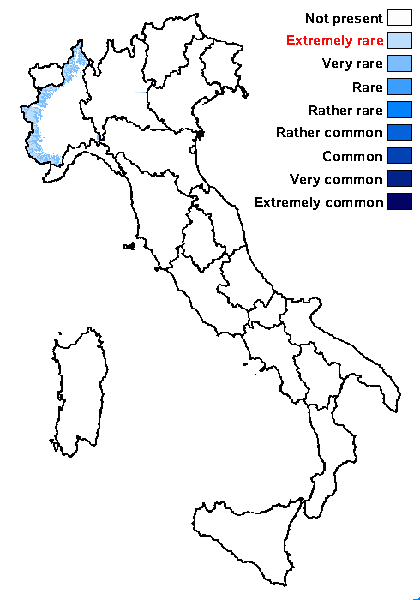
Predictive model
Herbarium samples
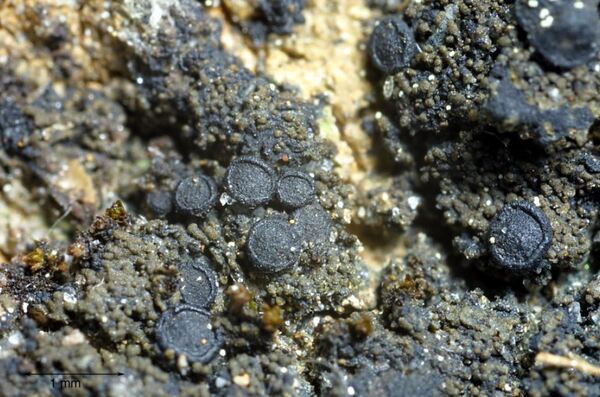

Felix Schumm – CC BY-SA 4.0
[12285], Griechenland, N-Samos, bei Manolates südlich von Agios Konstandinos, 37°47.185'N, 26°49.533'E, 341 m; halbschattige bis besonnte Terrassenmauern; Glimmerschiefer. Leg. Schumm 02.05.2006, det. Schumm 2006
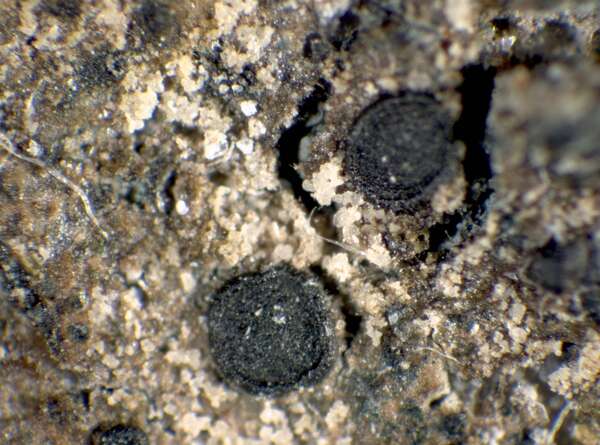

P.L. Nimis; Owner: Department of Life Sciences, University of Trieste
Herbarium: TSB (33335)
2001/12/10
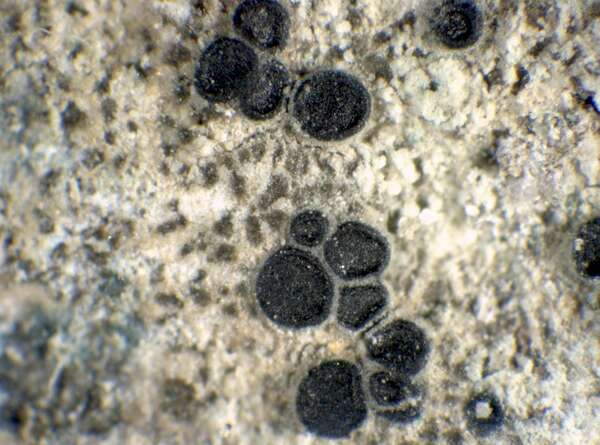

P.L. Nimis; Owner: Department of Life Sciences, University of Trieste
Herbarium: TSB (33335)
2001/12/10
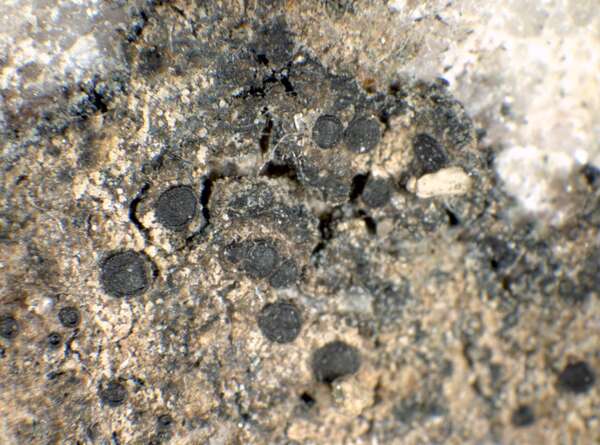

P.L. Nimis; Owner: Department of Life Sciences, University of Trieste
Herbarium: TSB (33335)
2001/12/10
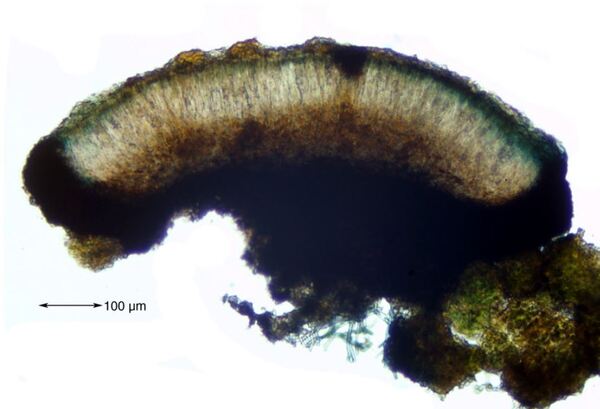

Felix Schumm – CC BY-SA 4.0
[12285], Griechenland, N-Samos, bei Manolates südlich von Agios Konstandinos, 37°47.185'N, 26°49.533'E, 341 m; halbschattige bis besonnte Terrassenmauern; Glimmerschiefer. Leg. Schumm 02.05.2006, det. Schumm 2006
Growth form: Crustose
Substrata: rocks
Photobiont: cyanobacteria, filamentous (e.g. Nostoc, Scytonema)
Reproductive strategy: mainly sexual
Periodically submerged (e.g. in creeks)
Poorly known taxon in need of further study
Commonnes-rarity: (info)
Alpine belt: extremely rare
Subalpine belt: extremely rare
Oromediterranean belt: absent
Montane belt: very rare
Submediterranean belt: absent
Padanian area: absent
Humid submediterranean belt: absent
Humid mediterranean belt: absent
Dry mediterranean belt: absent

Predictive model
| Herbarium samples |


Felix Schumm – CC BY-SA 4.0
[12285], Griechenland, N-Samos, bei Manolates südlich von Agios Konstandinos, 37°47.185'N, 26°49.533'E, 341 m; halbschattige bis besonnte Terrassenmauern; Glimmerschiefer. Leg. Schumm 02.05.2006, det. Schumm 2006


P.L. Nimis; Owner: Department of Life Sciences, University of Trieste
Herbarium: TSB (33335)
2001/12/10


P.L. Nimis; Owner: Department of Life Sciences, University of Trieste
Herbarium: TSB (33335)
2001/12/10


P.L. Nimis; Owner: Department of Life Sciences, University of Trieste
Herbarium: TSB (33335)
2001/12/10


 Index Fungorum
Index Fungorum
 GBIF
GBIF
